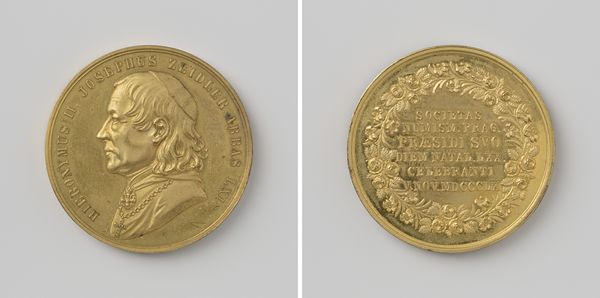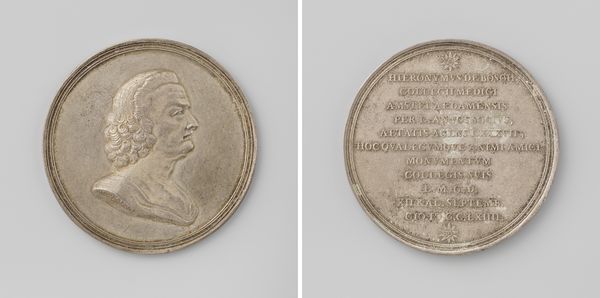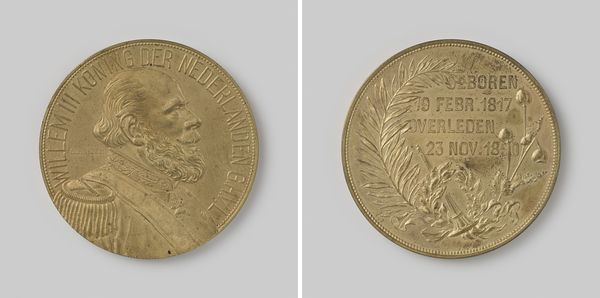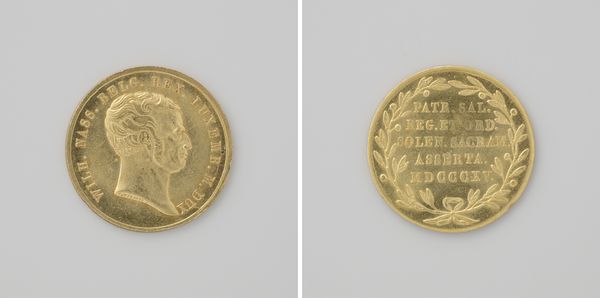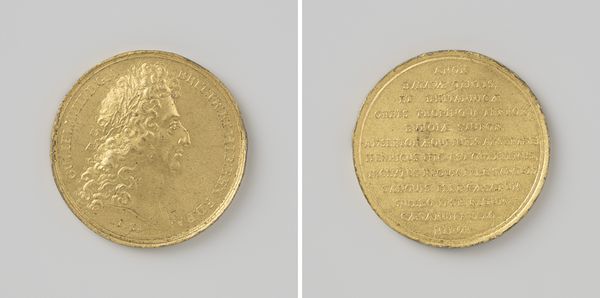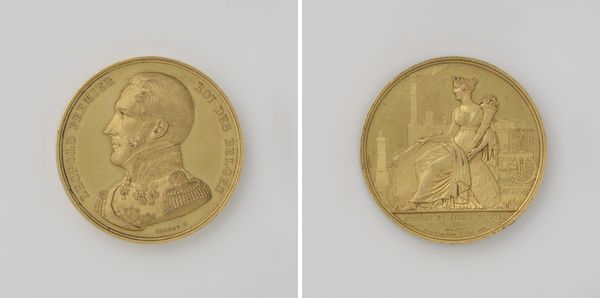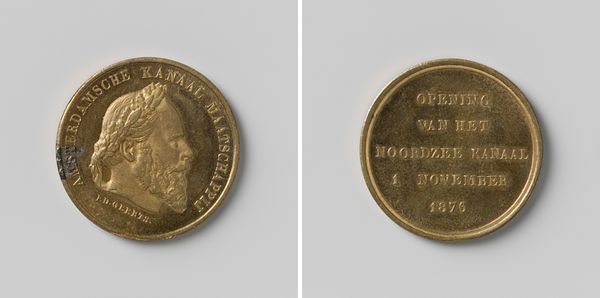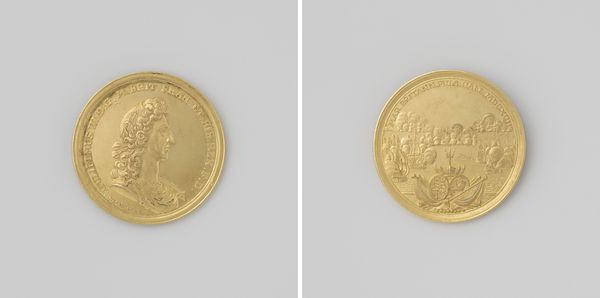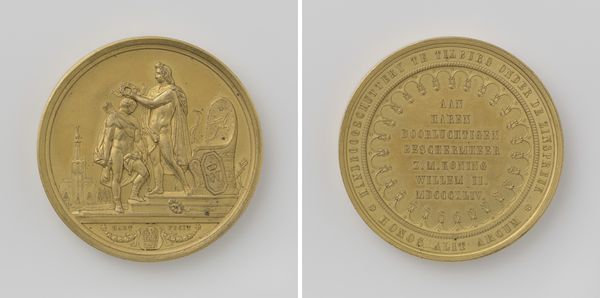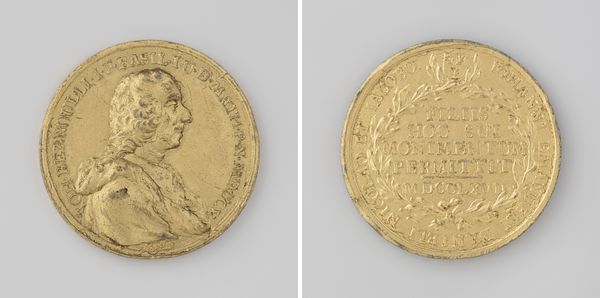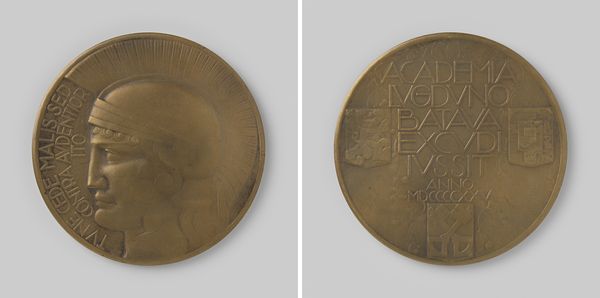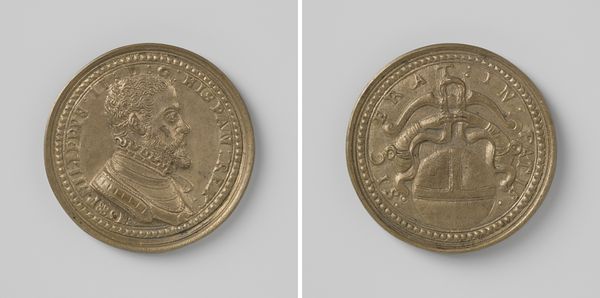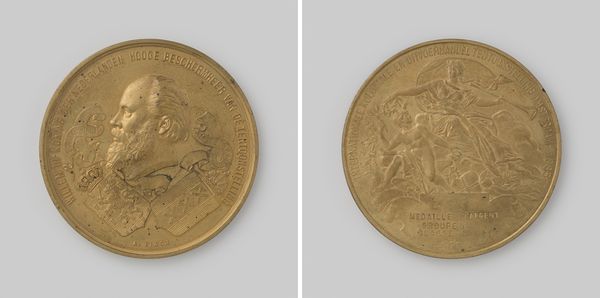
Stichting van de Koninklijke Academie van Beeldende Kunsten te Brussel, ter ere van Willem I Frederik, koning der Nederlanden 1817
0:00
0:00
metal, relief, sculpture
#
portrait
#
neoclacissism
#
metal
#
relief
#
sculpture
Dimensions: diameter 5 cm, weight 50.17 gr
Copyright: Rijks Museum: Open Domain
Curator: Here we have a commemorative medal, "Stichting van de Koninklijke Academie van Beeldende Kunsten te Brussel, ter ere van Willem I Frederik, koning der Nederlanden," crafted in 1817 by Joseph-Pierre Braemt. Editor: It’s rather striking! The clarity of the relief, the simplicity—almost austere, and that brilliant gold hue give it an incredible presence, despite its scale. Curator: The piece serves as an interesting artifact. Consider the political landscape: Willem I, representing Dutch rule over Belgium. This medal isn't simply celebrating art; it's also solidifying power, isn't it? The founding of an art academy as a symbol of enlightened governance... It's all carefully constructed. Editor: Yes, and the aesthetic vocabulary further reinforces that order. The classical profile, for example, is rendered with clean lines and almost emotionless expression, reflecting a neo-classical revival harkening back to the virtues of ancient republics. A constructed, deliberate projection. Curator: Indeed, and if we dig a little deeper into this construction, who exactly benefits from this 'enlightened' rule? It certainly isn't a story equally shared, particularly when viewed through a colonial lens, as King Willem I’s reign and this institution took root amidst the exploitation of other peoples abroad. Editor: Right. Still, looking at the technical details, I’m interested in how Braemt achieved such fine detail in metal. The text is crisp, the wreath that frames "Académie Royale de Bruxelles" feels both robust and delicate. How do you see the symbolic significance of that laurel wreath? Curator: It clearly signifies honor and achievement. The Royal Academy in Brussels is literally crowned with prestige, endorsed by the king whose effigy adorns the other side. But look closer, this idealized image conveniently suppresses potential socio-economic disparities, obscuring dissent by blanketing them with aspirations of collective artistic flourishing under the King's patronage. Editor: That's an important perspective, for sure. This medal becomes not just an object of art, but an artifact loaded with the complexities of power, patronage, and perhaps even veiled suppression. Curator: Absolutely. It challenges us to see beyond the veneer of Neoclassical order and confront the tensions inherent in its creation. A beautiful object, but also a powerful tool of statecraft. Editor: A vital reminder that aesthetic choices never exist in a vacuum and are inseparable from political choices, as well as a strong foundation upon which the artistic talent of Belgium developed in the following centuries.
Comments
No comments
Be the first to comment and join the conversation on the ultimate creative platform.
